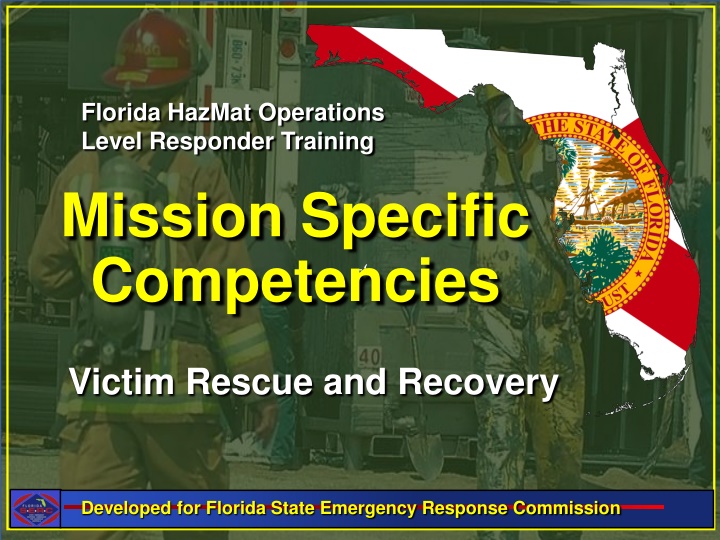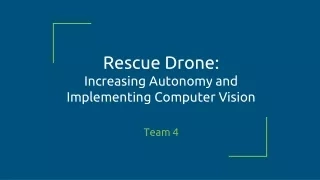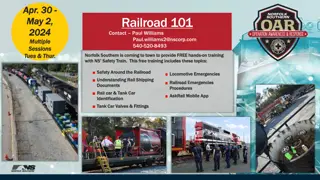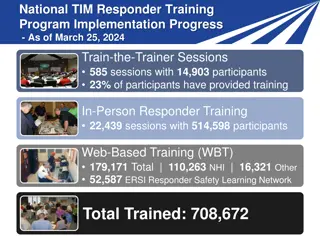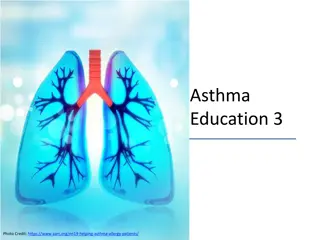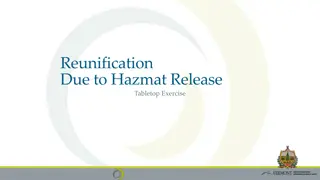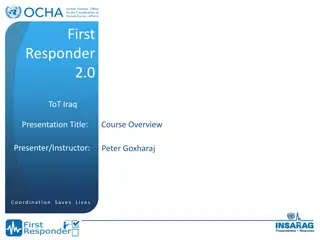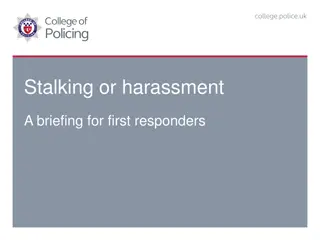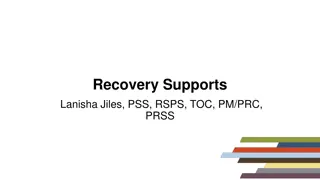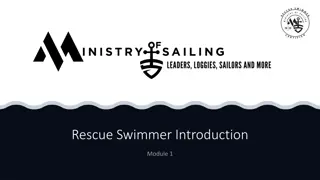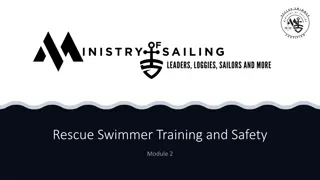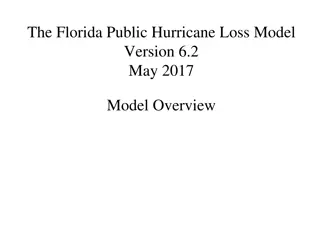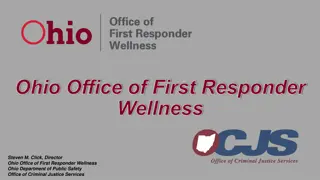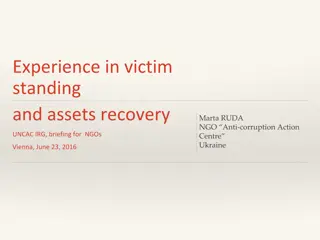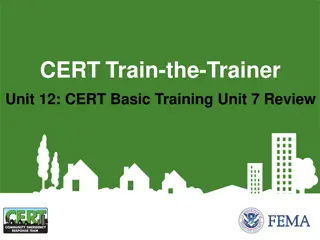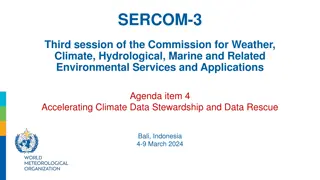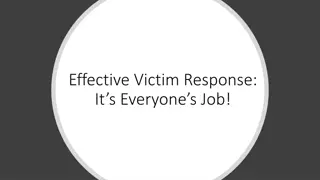Florida HazMat Operations Level Responder Training: Victim Rescue and Recovery
This training program focuses on developing competencies for victim rescue and recovery in hazardous materials incidents. From prerequisites to rescue triage phases and hazard assessment, responders learn essential skills to prioritize life safety and incident stabilization. The course covers methods of instruction, victim types, and understanding risk versus benefit.
Download Presentation

Please find below an Image/Link to download the presentation.
The content on the website is provided AS IS for your information and personal use only. It may not be sold, licensed, or shared on other websites without obtaining consent from the author.If you encounter any issues during the download, it is possible that the publisher has removed the file from their server.
You are allowed to download the files provided on this website for personal or commercial use, subject to the condition that they are used lawfully. All files are the property of their respective owners.
The content on the website is provided AS IS for your information and personal use only. It may not be sold, licensed, or shared on other websites without obtaining consent from the author.
E N D
Presentation Transcript
Florida HazMat Operations Level Responder Training Mission Specific Competencies = = Victim Rescue and Recovery Developed for Florida State Emergency Response Commission
Prerequisites for Victim Rescue and Recovery Meet all competencies for: Awareness Level Operations Level Mission Specific Personal Protective Equipment Operations Level Responder assigned to Victim Rescue and Recovery Meet all competencies in this section =
Method of Instruction Classroom activity (lecture and exercise) Group PPE demonstration and practice =
Rescue Triage The act of attempting to help as many people as possible and deciding who gets rescued first. Different than medical triage where determining who is most critical for immediate treatment. Rescue Triage takes place in four phases =
Phases of Rescue Triage Phase 1 those that can leave the scene on their own or with help from another victim. Phase 2 those who can be assisted out of the scene with the help of one rescuer. Phase 3 those who require a stretcher or cot and two rescuers. Phase 4 those who require more time, equipment, and rescuers (entrapped). These become the last priority. =
Hazard and Risk Assessment Covered in the Hazardous Material Operation Level training core program Rescue of a viable victim is at the top of the list for risk vs benefit. Risk will be taken because the benefit is great. Priorities on every hazmat incident is LIPE Life Safety Incident Stabilization Property Conservation Environmental Preservation =
Life Safety Four priorities in Life Safety #1 Your life. Without preservation of your life you are unable to assist anyone else. #2 Your fellow responder for the same reason. #3 General public. This is the reason for your initial response is to protect the public. #4 The victim. Not that this is not important it is! But it is not the top priority. =
Victim Types Ambulatory Non-Ambulatory These victims are either: Line-of-Site Non-Line-of-Site =
Line-of-Sight Ambulatory Victims Easiest victims to rescue. The condition of the victim lets you know that the level of hazardous materials is not high. These victims can be directed to an area of safe refuge before entering the decontamination corridor. After decontamination they will be medically assessed, medical triaged, treated, and transported. =
Line-of-Sight Non-Ambulatory Victims Need to be medically triaged in the hot zone and removed based on severity of injury. Note: medical triage systems are for trauma related victims and may not work on chemically injured victims. If the victims are alive in the hot zone, this indicates that the level of hazardous chemical is low or less toxic. =
Line-of-Sight, Non-Ambulatory Victims Rescue of non-ambulatory victims out of the hot zone is an Operations Level skill and can be effectively done when certain conditions apply: Victim is alive. Back up team is immediately available. Emergency decontamination is ready. =
Non-Line-of-Sight Ambulatory Victims To find victims and assess their needs a recon team must be assembled (Technician Trained). Full PPE appropriate for the incident. Recommend carrying monitors to determine danger. If ambulatory victims found they will be directed out of the hazard area by the safest route. Decontamination performed prior to assessment, medical triage, treatment, and transport to the hospital. =
Non-Line-of-Sight Non-Ambulatory Victims Incidents inside of buildings have the greatest chance of producing Non-Line-of- Sight, Non-Ambulatory patients. Not discovered until recon team locates them. If rescue is attempted, respiratory PPE should be made available for the victim. If it is determined that the victim(s) are body recovery, they become a low priority and can wait until the incident is stabilized. =
Rescue Equipment Medic Stretcher requires 2 rescuers. Easily decontaminated. Backboards victim must be carried which is difficult with PPE. Requires 2 rescuers. Easily decontaminated. Stokes Basket 2 designs; wire and fiberglass. Wire basket provides any easy means of victim decontamination. Fiberglass tends to trap contamination necessitating the patient be moved off of Stokes Basket. 2 rescuers required. SKED Rescue Device Patient placed on SKED and dragged out of hot zone. 1 rescuer. =
